Builder Culture is here. Are you ready for it?
CEOs are debugging. PMs are coding. VPs are trading up leadership roles for IC PM jobs. Builder Culture is here.
Something is shifting in tech leadership, and it’s happening at every level:
Meta’s CEO Mark Zuckerberg is personally poaching AI researchers.
Google’s CEO Sundar Pichai is closing out feature requests himself.
Perplexity’s CEO Aravind Srinivas seen debugging code minutes before a YCombinator stage interview.
VP-level Product Leaders trading up management seats for Individual Contributor AI PM roles to sharpen their skills.
Shopify adding a vibe coding section to PM interviews, starting with APMs.
In 2025, credibility doesn’t come from “managing the managers.” It comes from building.
👋 Builder Culture is here.
🐛 Google’s CEO Tracking Bug Reports?
This week’s newsletter was inspired by an exchange on X between Sundar Pichai and John Collison.
Stripe’s co-founder put in a Google Calendar feature request on July 5th. By August 13th, Pichai himself replied on X: the feature was live.
A Google CEO, taking granular product feedback on X, closing out the request, and shipping within weeks? A few years ago, this would have been unheard of.
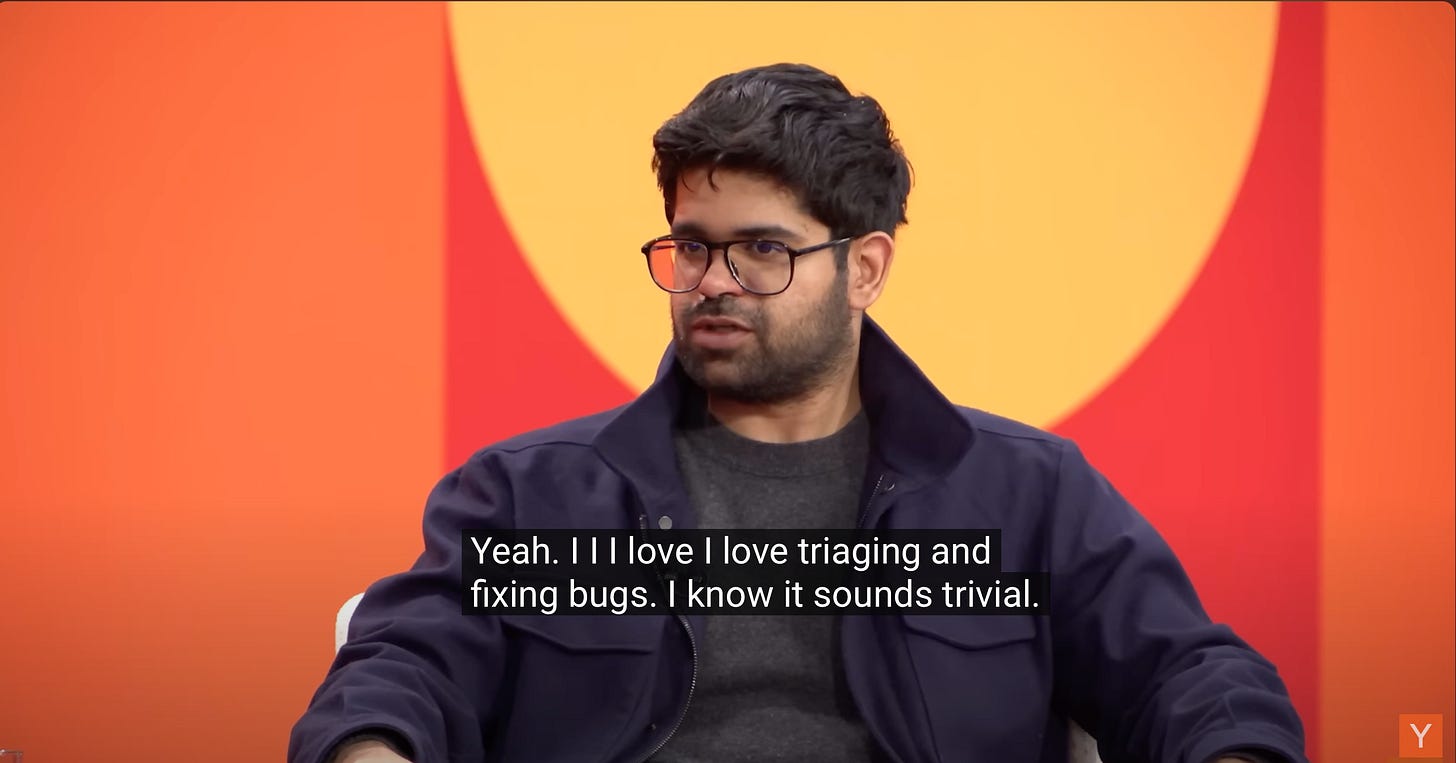
Similarly, Perplexity’s CEO Aravind Srivinas was fixing a bug before heading on stage to do a talk at AI Startup School with YCombinator.
When asked about it, he said:
“I love triaging and fixing bugs. I know it sounds trivial, like is that the best use of the time of a CEO? There are a lot of people who would think otherwise… I hope this behavior is rubbing off on others, like I've noticed even Sundar is doing bug support on X right now.”
Aravind was probably referring to a few posts in May, where Sundar mentioned he was personally tracking bug reports for Veo3 and Google Meet.
If Elon Musk set the tone by sleeping on the Tesla factory floor, today’s leaders are signalling their commitment and modelling a sense of urgency by writing code, closing tickets, and engaging directly with users.
In this climate, even the most senior executives are expected to be builders.
Why Builder Culture is Back
For years, climbing the ladder meant doing less hands-on work.
The higher you rose, the more your calendar filled with:
💆♂️ “alignment meetings”
🚥 status updates
🔏 and reviews.
But AI flipped the script, forcing leadership to stay closer to the work because:
Execution cycles are faster. AI dev tools mean the pace of software development and customer expectations is rising. There’s no time for corporate bureaucracy and politicking.
Management tasks are increasingly seen as “overhead”. Reporting, resourcing, and project tracking are increasingly being automated. Value is delivered from “doing the work” instead of managing the work.
The bottleneck has shifted. As Andrew Ng put it, product & design, not engineering, are now the bottleneck in the software development lifecycle.
As things move faster, leadership cannot add another bottleneck. Leadership’s mandate is now to streamline executive-level decisions and alignment.
And one way to do that is by staying hands-on.
What Product Leaders need to know:
Seeing Sundar Pichai close a Google Calendar feature request raises an important question:
Is this too granular for his level?
Some would say he’s “locked in”. He’s modelling the urgency and customer-focus that Google needs more of. And there’s truth to that.
However, I’ll take the opposing stance. Executives are most effective when they reserve their hands-on time for existential bets.
Here’s the difference:
❌ Closing out a Google Calendar feature is a nice quality-of-life win. But it’s not existential for Google.
✅ Veo 3, on the other hand, is existential. It’s a net-new AI product that could shape Google’s future. That’s where Sundar’s involvement, even in tracking bug reports, make the most sense.
Hands-on leadership creates value when it’s applied with precision.
Here’s a framework to guide when Product Leaders should step in:
✅ High-Leverage Moments
These are times when a leader’s involvement creates exponential impact.
Strategic bets. Existential launches or new business lines. Zuck personally recruiting AI talent signals his commitment to building the team.
Culture-shaping moves. Elon on the factory floor wasn’t about fixing machines: it was a signal of urgency.
❌ Low-Leverage Moments
These are better left to the team.
Routine bug fixes (unless it’s blocking a strategic launch).
Incremental enhancements that don’t move the North Star metric.
Work that could be better delegated for learning and ownership.
The best leaders don’t just do. They pick their spots with precision.
🔲 The 2x2 of Hands-On Leadership
… because who doesn’t love a 2x2 good matrix?
👉 The sweet spot: high-impact, high-visibility actions that shape culture and move the strategy forward.
So, what about ICs and mid-level management?
For Product folks in the middle innings of their career, the same bias towards Builders is playing out.
Shopify’s COO announced on X that Shopify is adding a coding portion to every Product Manager interview, starting with Associate Product Managers.
This follows a viral Reddit post about a Google PM interview that rattled the product job seekers community: “I messed up my Google PM Vibe Coding Interview”.
And at the leadership levels, reports from Product Leader & Investor Gokul Rajaram’s network show mid-level managers and VPs are trading management seats for IC PM roles in AI companies.
Even managers-of-managers are choosing building over managing.
👉 Builder culture means value isn’t in translating requirements or leading by PRD. You actually have to turn your vision into a reality.
🙋 What Product Builders Need to know
Builder culture changes expectations for everyone:
Prototype-first mindset. Experiment with vibe coding to show, not tell.
(PS - see this post on how to incorporate Vibe Coding into your workflow)
Leverage faster cycles for discovery. Speed gains should translate into more customer research, validation, and testing hypotheses.
Protect focus time. Block your calendar for hands-on work and exploration.
Watch leadership’s signals. When an exec jumps in, pay attention. What they touch, shows what matters.
For Executives/Leaders, be intentional with jumping in. Seek high-value-add, high-leverage opportunities.
💡 Final Thoughts
For ICs: builder skills are your edge. Build them, refine them, and stay close to the work.
For Product Leaders: Great leaders don’t build all the time. They build at the right time: at high-leverage moments.



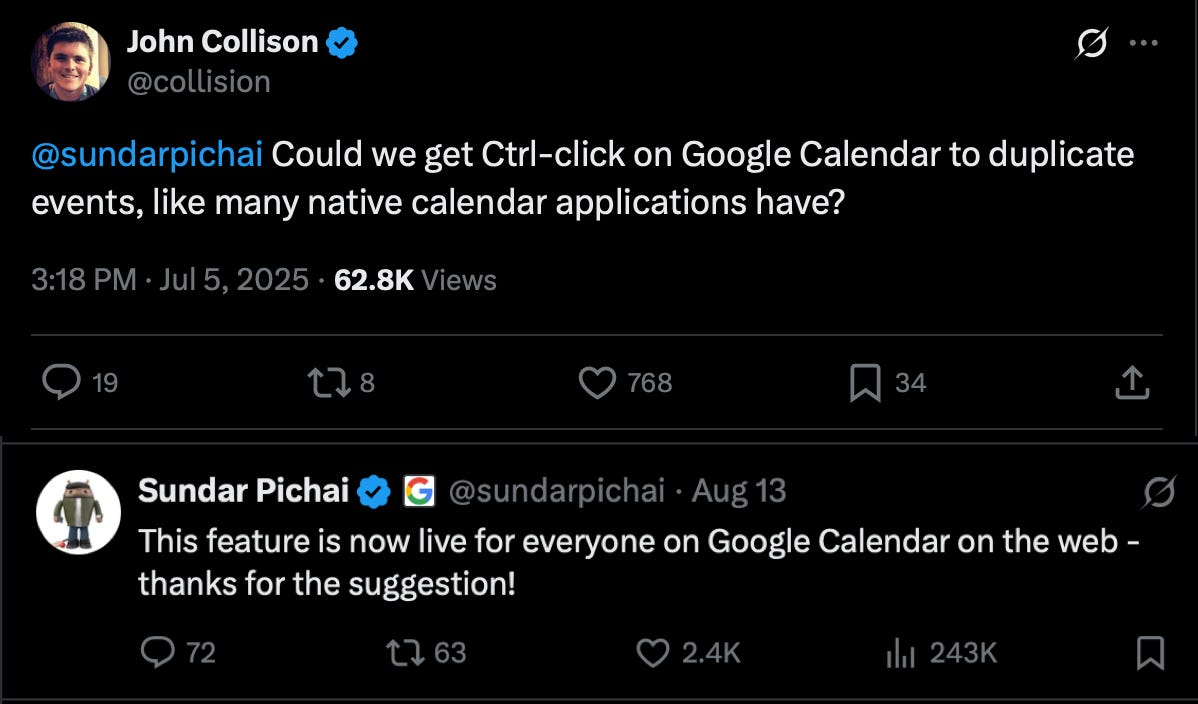
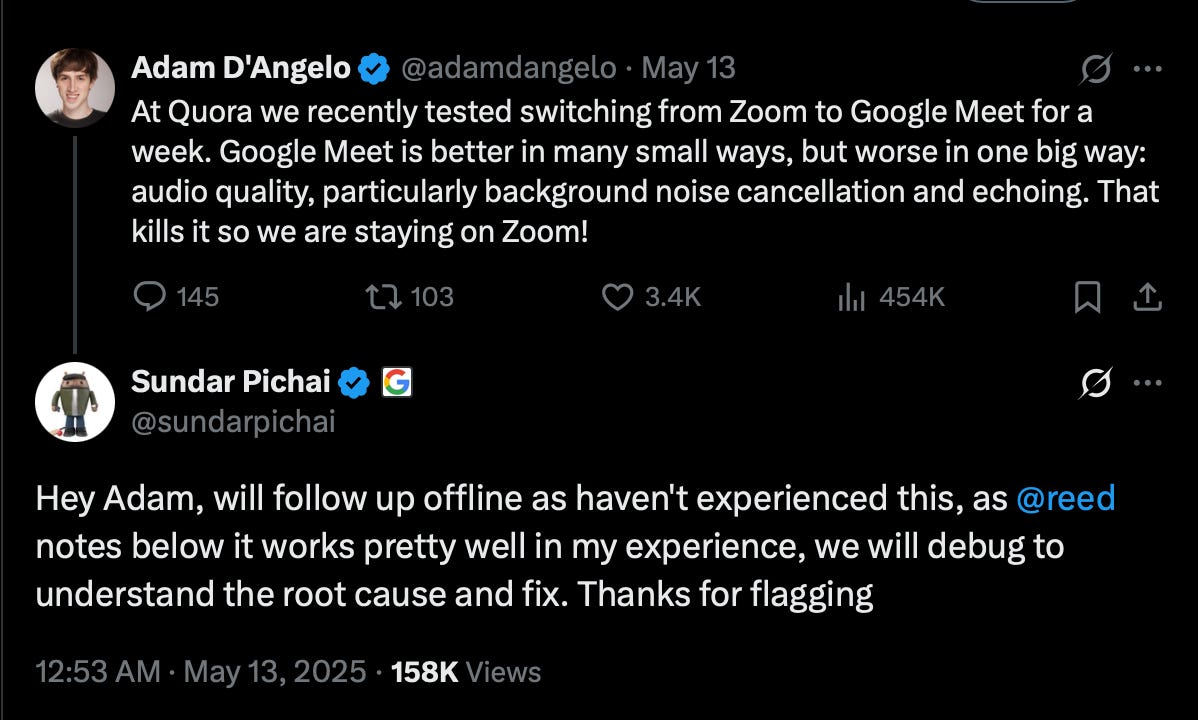
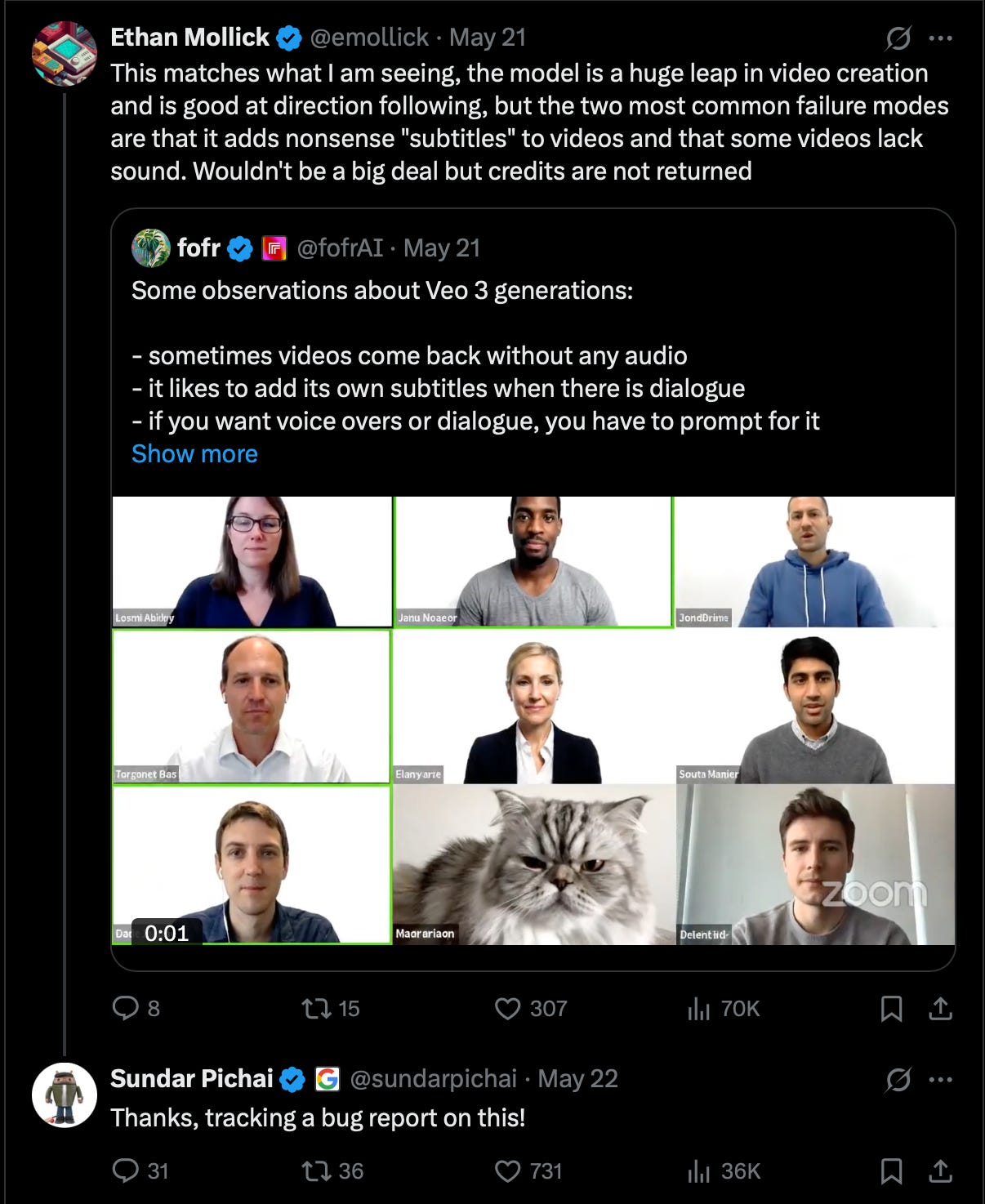
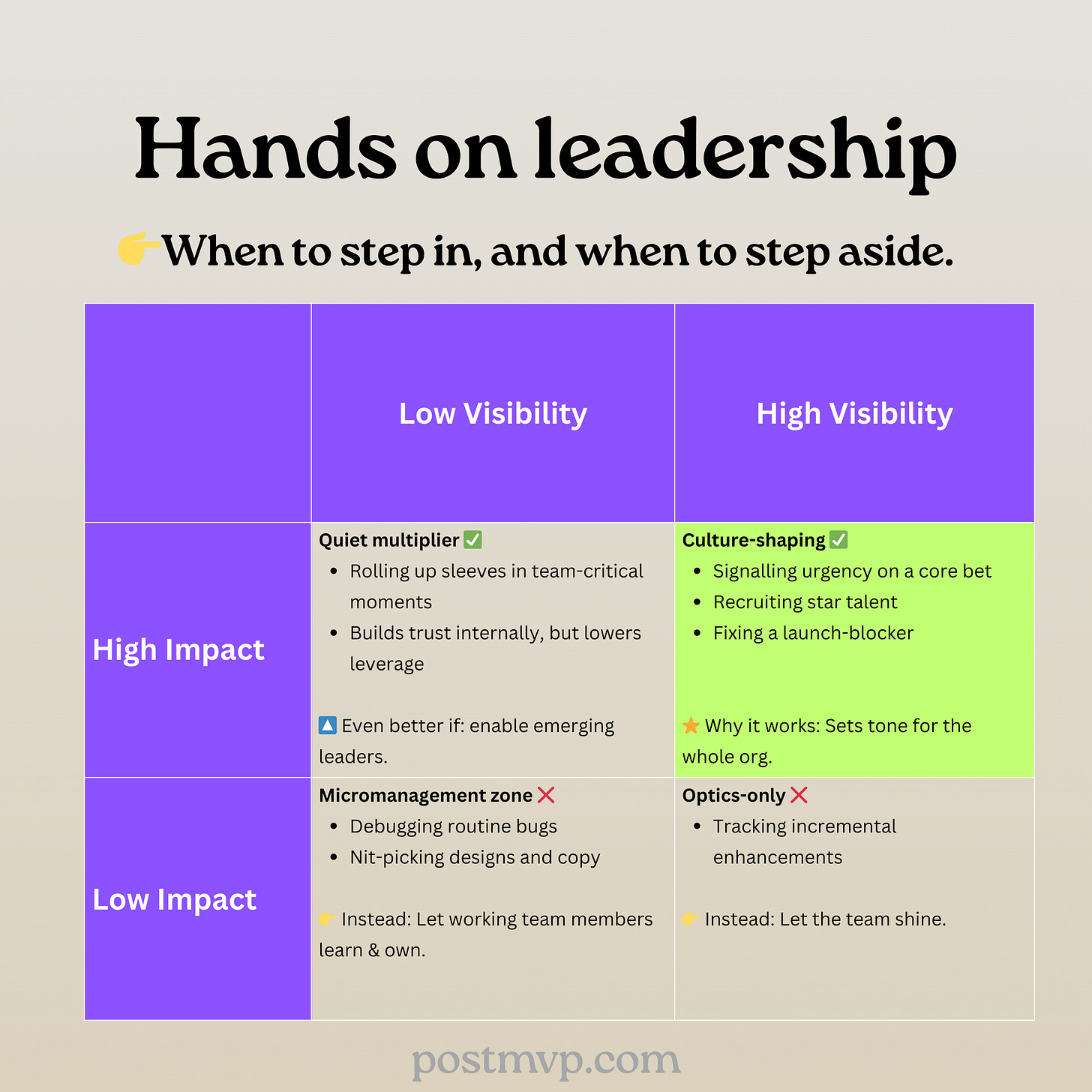

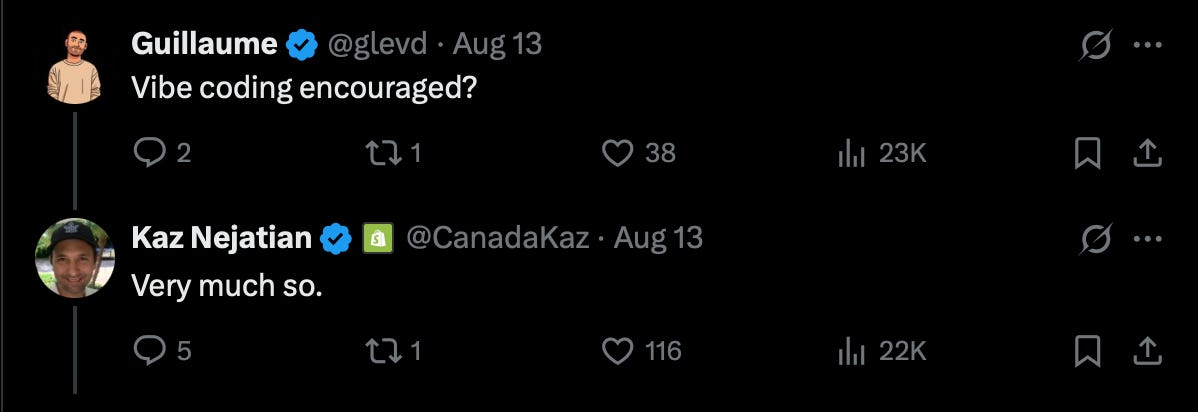


It is interesting how to see this culture shift. Enjoyed the post, thanks for sharing